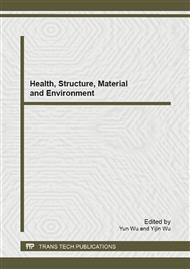[1]
Li Yue and Xie Bing. Status and prospects of the slab track CA mortar [J]. The World of Building Materials. 2010 (2) 46-49.
Google Scholar
[2]
XuJing, Zhang Yong and Zhang Xiaodong. Factors influencing strength of cement asphalt mortar and mechanism research [J]. Railway Engineering. 2010 (9) 134-138.
Google Scholar
[3]
Wang Tao. Research and application on CA mortar in ballastless slab track of high speed railway [D]. Wuhan University of Technology, (2008).
Google Scholar
[4]
Wang Tao, Hu Shuguang and Wang Fazhou. Major factors influencing strength of CA mortar [J]. Railway Engineering. 2008 (2) 109-111.
Google Scholar
[5]
Zhao Dongtian, Wang Tiecheng and Liu Xueyi. Preparation and performance of CA mortar in the track slab [J]. Journal of Tianjin University. 2008 (7) 793-799.
Google Scholar
[6]
Wang Tao, Hu Shuguang and Wang Fazhou. Mechanism study on the effects of mixing sequence of asphalt emulsion on strength development of CA mortar [J]. Railway construction technology. 2008 (1) 1-3.
Google Scholar
[7]
Wang Fazhou, Liu Zhichao and Hu Shuguang. Influence of loading rate on compressive strength of CA mortar [J]. Journal of Beijing University of Technology. 2008 (10) 1059-1065.
Google Scholar
[8]
Kong Xiangming, Liu Yongliang and Yan Peiyu. Influence of loading rate on mechanical properties of cement asphalt mortars [J]. Journal of Building Materials. 2010 (2) 187-192.
Google Scholar
[9]
Kong Xiangming, Liu Yongliang and Yan Peiyu. Temperature sensitivity of mechanical properties of cement asphalt mortars [J]. Journal of Portland. 2010 (4) 553-558.
Google Scholar
[10]
Hu Shuguang, Zhang Yunhua and Wang Fazhou. Effect of temperature and pressure on the degradation of cement asphalt mortar exposed to water. Construction and Building Materials 2012(34) 570–574.
DOI: 10.1016/j.conbuildmat.2012.03.002
Google Scholar
[11]
Xie Youjun, Ceng Xiaohui and Deng DeHua. Mechanical characteristics of China railway track system(CRTS) I type slab tracks CA mortar under different strain rates [J]. Journal of Building Materials. 2010 (4) 483-486.
Google Scholar
[12]
Wang Fazhou and Liu Zhichao. Research on the fatigue behavior of CA mortar used in ballastless slab track of high speed railway [J]. Journal of Wuhan University of Technology. 2008 (11) 79-81.
Google Scholar
[13]
Wang Fazhou, Wang Tao and HuShuguang. Rheological behavior of cement asphalt mortar [J]. Journal of Wuhan University (engineering edition). 2008 (4) 69-72.
Google Scholar
[14]
Wang Fazhou, Liu Zhichao and Hu Shuguang. Influence of setting process of cement system in the presence of asphalt emulsion on the properties of CA mortar [J]. Journal of Building Materials. 2008 (2) 162-166.
Google Scholar
[15]
Zuo Jingqi, Jiang Jibin and Fu Daizheng. Research on CA mortar used in slab track, 2005(9) 96-98.
Google Scholar


